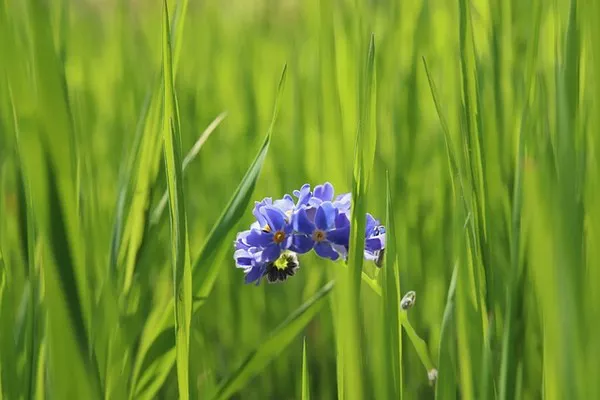Researchers from the University of Cincinnati have conducted a study shedding light on the increasing problem of invasive plant species in urban areas. Led by botanist Denis Conover, the study explores the unintended consequences of nonnative plants in arboretums and public gardens, revealing their impact on nearby forests.
Conover, a biology professor at the University of Cincinnati, emphasized the need to address the issue of invasive plant species, which can have detrimental effects on native ecosystems. The study, published in the journal Ecological Restoration, highlights the potential dangers of nonnative plants taking over and excluding native flora and fauna.
During the study, Conover and his team focused on the Spring Grove Cemetery’s arboretum in Cincinnati, where over 1,200 plant species have been recorded. While the arboretum is home to beautiful native plants, some nonnative plants are inadvertently spreading their seeds to neighboring woods through birds or wind dispersion.
Notable examples include the Amur cork tree and Higan cherry, both introduced to the arboretum but now found in nearby natural areas. The study emphasizes the importance of making informed choices about planting in yards and gardens to prevent the spread of invasive species.
Drew Goebel, a conservation technician at Cincinnati City Parks, shared examples of how invasive species, once introduced, can spread to adjacent natural areas. The study reveals that strategic interventions, such as removing invasive species and replacing them with native alternatives, can make a significant impact on mitigating the problem.
David Gressley, director of horticulture at Spring Grove Cemetery, highlighted the importance of controlling invasive species, citing ongoing efforts to replace invasive plants with native ground covers. The study underscores the continuous battle against invasive species and the significance of public awareness in making informed choices.
Conover stressed the broader implications of addressing invasive species, emphasizing that protecting natural areas and preserving native plants and animals requires significant time and resources. The study calls for increased education about invasive species, encouraging individuals to choose native alternatives for the benefit of local ecosystems.
As co-author Samantha Al-Bayer, now working in Guam, points out, invasive species pose a significant threat, especially on islands where natural predators are scarce. The study concludes by urging homeowners to take action by removing invasive species on their properties and choosing native trees, shrubs, and flowers to contribute to the preservation of urban biodiversity.


